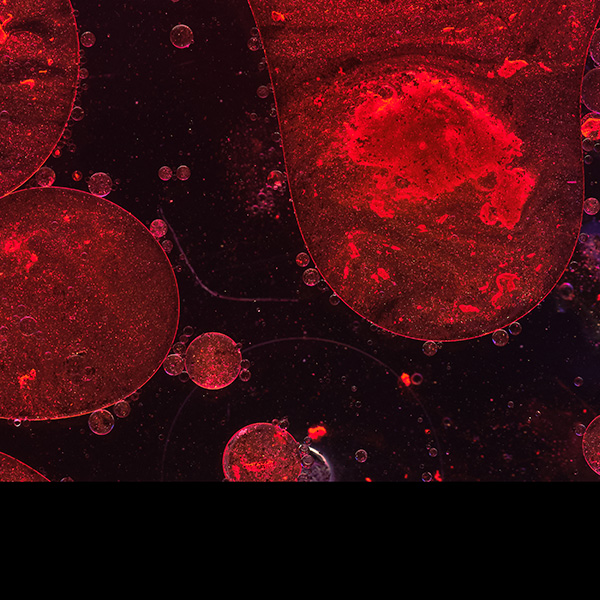Key Benefits
- Spot PCOS-related hormone patterns driving irregular periods, acne, or excess hair growth.
- Flag androgen excess; high testosterone or FAI with low SHBG confirms hormonal imbalance.
- Clarify ovulation problems; LH and FSH patterns help explain cycle irregularity.
- Spot insulin resistance early; elevated insulin raises diabetes and heart risk in PCOS.
- Guide treatment; results tailor lifestyle, metformin, birth control, or anti-androgens to your goals.
- Protect fertility; addressing hormone and insulin issues supports ovulation and conception timing.
- Track progress; repeat markers show response to therapy and return of symptoms over time.
- Best interpreted with menstrual history, symptoms, cycle timing, and medications affecting hormones.
What are PCOS
PCOS biomarkers are measurable signals in the body that map how your ovaries, brain, and metabolism are working together. They translate the syndrome’s core biology—excess androgen signaling, disrupted ovulation, and insulin resistance—into objective data that can be followed over time. Ovarian and adrenal androgens (testosterone, androstenedione, DHEA‑S) show the intensity and source of androgen drive. Brain‑to‑ovary messengers (LH and FSH) reflect cycle regulation, while an ovarian growth signal (anti‑Müllerian hormone, AMH) mirrors the pool of small follicles. A transport protein (sex hormone–binding globulin, SHBG) indicates how much testosterone is freely active. Metabolic markers (insulin, glucose, lipids) capture the body’s insulin response and longer‑term cardiometabolic strain, linking reproductive hormones to energy balance. Together, these biomarkers turn diffuse symptoms into a clear physiologic profile, helping confirm the diagnosis, reveal the dominant pathways for each person, and guide targeted strategies—whether aimed at ovulation, androgen effects, or metabolic health. Repeated over time, they serve as a practical dashboard to monitor progress as biology shifts with lifestyle, medication, or life stage.
Why are PCOS biomarkers important?
PCOS biomarkers are the hormone and metabolic signals that reveal how the brain–ovary–metabolic axis is working. They show whether the pituitary is pacing ovulation, the ovaries are making androgens appropriately, the liver is binding those androgens, and insulin is keeping blood sugar stable—all systems that shape cycles, skin, hair, fertility, and long‑term cardiometabolic health.
Typical, healthy patterns in women place total testosterone within the female reference range toward the lower‑to‑middle portion, SHBG in the middle to higher portion, a low free‑androgen index, LH and FSH in the follicular phase with a ratio around 1, and fasting insulin in the low‑normal range. These patterns signal regular ovulation, balanced sebum and hair growth, and steady energy.
When values sit low, they tell different stories. Low testosterone or a very low free‑androgen index can reflect hypothalamic–pituitary suppression or high SHBG, showing up as low libido, fatigue, or hair shedding. Low SHBG points to hepatic insulin resistance and androgen availability, often with oily skin or irregular cycles. Low LH or FSH suggests stress, under‑nutrition, or hypothalamic amenorrhea rather than PCOS. Very low insulin may accompany restrictive intake and can predispose to hypoglycemic symptoms. In teens, fluctuating LH/FSH is common and can mimic PCOS; in pregnancy, SHBG rises while insulin resistance increases, shifting interpretation.
When values run high, they map classic PCOS physiology: elevated testosterone or a higher free‑androgen index drives acne, hirsutism, and scalp hair thinning; a higher LH relative to FSH promotes anovulation; elevated insulin lowers SHBG and fuels ovarian androgen production, linking to weight gain and acanthosis.
Big picture, these biomarkers interlock: insulin and liver proteins regulate how much androgen is “free,” pituitary signals determine ovulation, and ovarian output feeds back to the brain. Tracking them together clarifies phenotype, guides risk assessment for diabetes, dyslipidemia, endometrial health, and cardiovascular disease, and frames progress over time.
What Insights Will I Get?
PCOS is a systems condition affecting energy, metabolism, cardiovascular risk, and reproductive timing. Biomarkers show how hormones and insulin interact to drive symptoms and long-term risk. At Superpower, we measure Testosterone, SHBG, FAI, LH, FSH, and Insulin.
Testosterone reflects androgen output; in PCOS it is often high, especially the free fraction driving tissue effects. SHBG, a liver protein, binds testosterone and limits bioavailable androgen; low SHBG raises free T. The Free Androgen Index (FAI) combines T and SHBG to estimate free T. Normal T with adequate SHBG and a low FAI suggest stable androgen tone; the reverse signals amplified androgen action.
LH stimulates thecal cells to make androgens, while FSH supports follicle growth. Many with PCOS show higher LH or an elevated LH:FSH ratio, impairing ovulation. Steadier LH with sufficient FSH supports regular cycles; excess LH relative to FSH biases ovaries toward androgens.
Insulin coordinates glucose metabolism and cross-talks with ovaries and liver. In PCOS, hyperinsulinemia increases thecal androgen output and suppresses SHBG. Physiologic insulin supports metabolic flexibility and hormone balance; elevated insulin indicates insulin resistance that fuels androgen excess.
Notes: Interpretation varies with age, body composition, pregnancy/postpartum state, menstrual phase, time of day, fasting status, acute illness, and assay method. Hormonal contraception, antiandrogens, glucocorticoids, fertility drugs, and insulin-sensitizers alter levels. No single test diagnoses PCOS; patterns do.







.avif)



.svg)





.svg)


.svg)


.svg)

.avif)
.svg)










.avif)
.avif)
.avif)


.avif)
.png)


